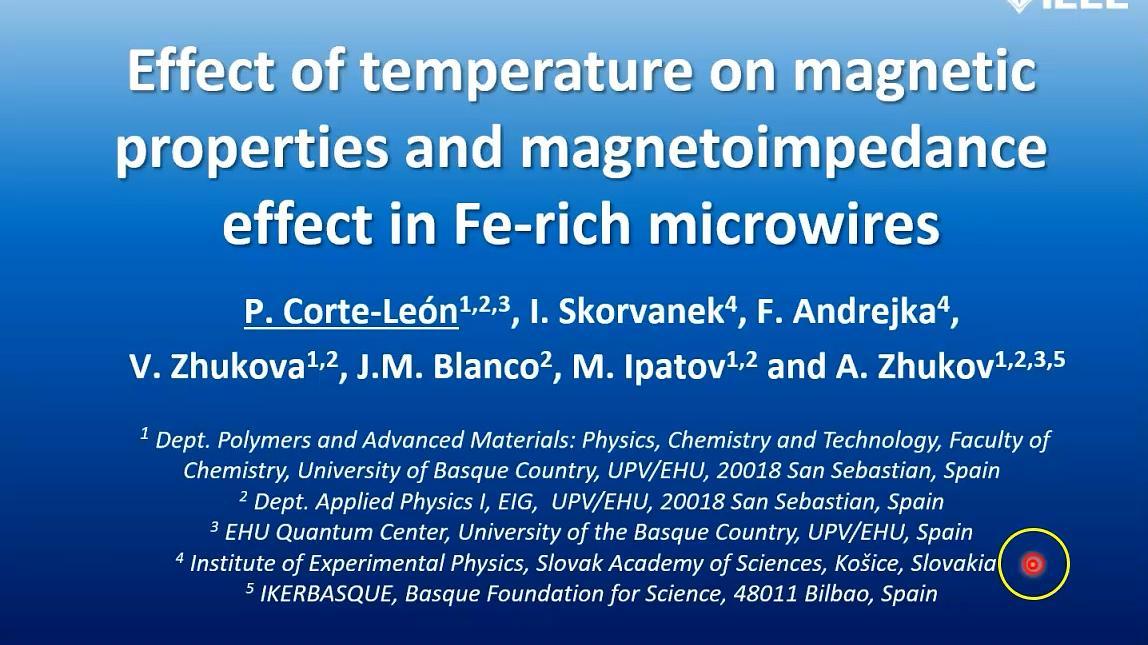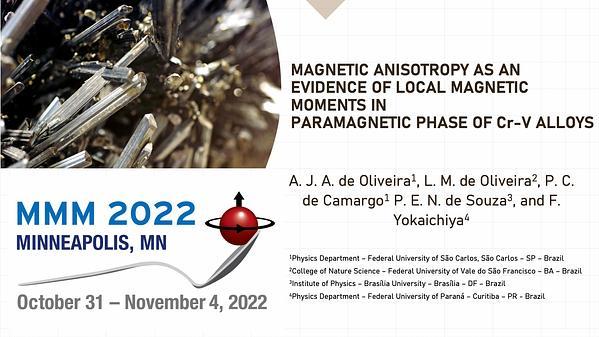
Premium content
Access to this content requires a subscription. You must be a premium user to view this content.

technical paper
Effect of temperature on magnetic properties and magnetoimpedance effect in Fe rich microwires
Recently, multifunctional composite materials with magnetic wire inclusions for non-destructive and non-contact stress and temperature monitoring have been proposed 1. Therefore, studies of temperature dependence of the Giant magnetoimpedance, GMI, effect become essentially relevant. There are only very few studies on temperature dependence of GMI and most of them were performed in thick amorphous wires without glass coating and in very limited temperature range 2,3,4. Although usually the highest GMI effect is observed in Co-rich magnetic wires, GMI effect of Fe-rich glass-coated microwires can be substantially improved by stress-annealing induced magnetic anisotropy 5.
GMI effect and magnetic properties under temperature influence of as-prepared and stress annealed (annealing temperature Tann= 325 oC, stress applied during the annealing σ= 190MPa) thin amorphous Fe75B9Si12C4 glass-coated microwires produced by the Taylor Ulitovsky technique are analyzed. Remarkable change in the hysteresis loops and GMI effect is observed for both samples upon heating. For as-prepared FeBSiC microwire a beneficial influence of temperature on the GMI ratio is observed and hysteresis loops change of character from almost rectangular shape to inclined one (Fig.1). On the other hand, although GMI ratio improvement after stress-annealing decreases with the temperature increasing (Fig.2), temperature dependence can be tuned by the stress annealing conditions. Additionally, almost complete reversibility of the changes induced by the temperature is observed.
Temperature dependence of the hysteresis loops and GMI effect of studied microwires is explained considering the heating effect on the internal stresses relaxation, the modification of the thermal expansion coefficients of the metallic nucleus and the glass coating and in terms of the Hopkinson effect.
References:
1 A. Allue et al., Compos. Part A Appl. Sci. and Manuf., Vol. 120, p.12 (2019).
2 J. Nabias, A. Asfour and J. Yonnet, IEEE Trans. Magn., Vol. 53(4), p.4001005 (2017).
3 J.D. Santos, R. Varga, B. Hernando and A. Zhukov, J. Magn. Magn. Mater. 321, p.3875 (2009).
4 M. Kurniawan et al., J. Electron. Mater., Vol. 43, p.4576 (2014).
5 V. Zhukova et al., Scr. Mater., Vol. 142, p.10 (2018).

Fig.1. Hysteresis loops (a) and GMI ratio at f= 50 MHz (b) of as-prepared sample, measured at different temperature.

Fig.2. Hysteresis loops (a) and GMI ratio at f= 50 MHz (b) of stress annealed sample at 325 oC during 15 min (applied stress σ= 190 MPa), measured at different temperature.

